Warplanes of the USA: McDonnell FH Phantom
McDonnell FH Phantom

(USN Photo)
USN McDonnell FH-1 Phantom (BuNo. 111793) in flight, 17 Feb 1948. 111793 is today on display at the National Museum of Naval Aviation at Pensacola, Florida.
The McDonnell FH Phantom is a twinjet, straight-wing, carrier-based fighter aircraft designed and first flown late in the Second World War for the US Navy. As a first-generation jet fighter, the Phantom was the first purely jet-powered aircraft to land on an American aircraft carrier, and the first jet deployed by the US Marine Corps. Although only 62 FH-1s were built it helped prove the viability of carrier-based jet fighters. As McDonnell's first successful fighter, it led to the development of the follow-on F2H Banshee, which was one of the two most important naval jet fighters of the Korean War; combined, the two established McDonnell as an important supplier of navy aircraft. The FH Phantom was originally designated the FD Phantom, but this was changed as the aircraft entered production. (Wikipedia)
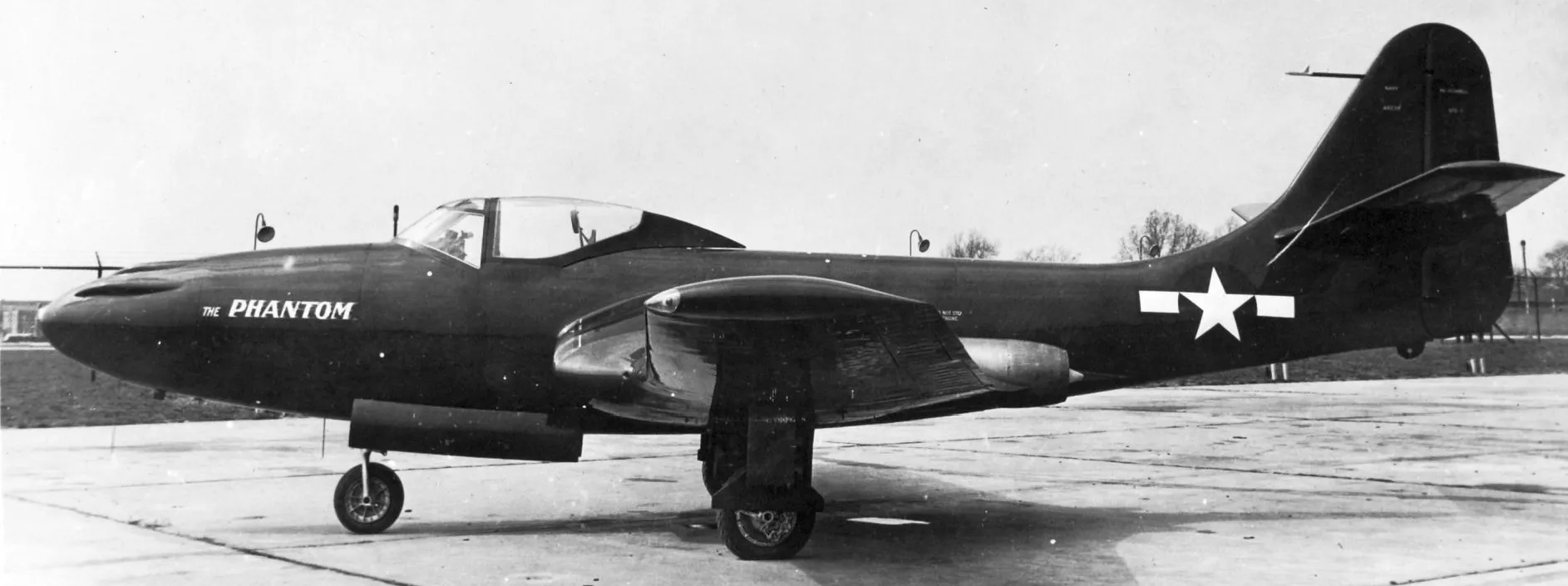
(USN Photo via the SDASM)
McDonnell XFD-1 Phantom prototype, 1945.
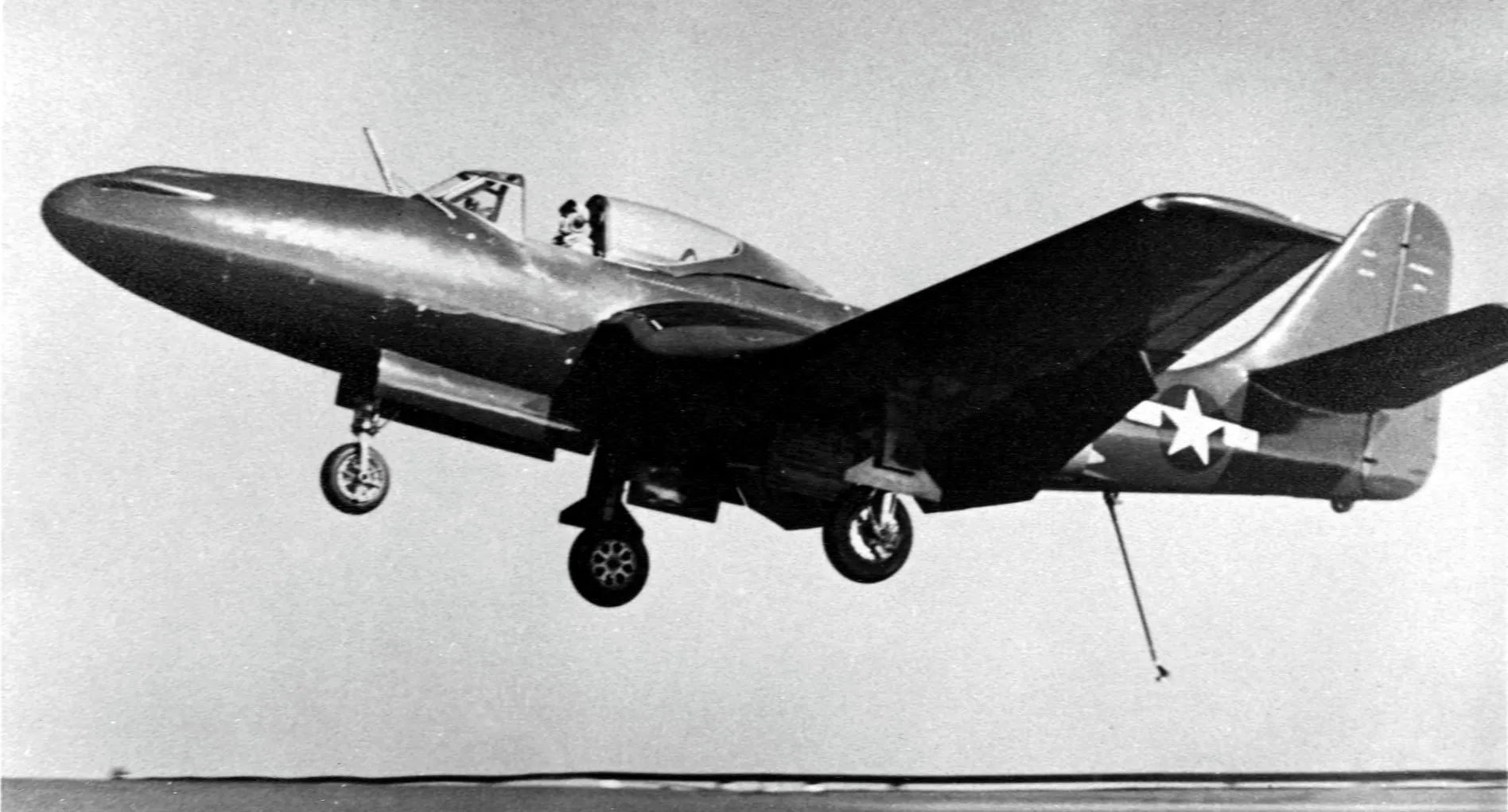
(NNAM Photo)
McDonnell XFD-1 Phantom landing aboard USS Franklin D. Roosevelt (CVB-42) on 21 July 1946. LCdr James Davidson, USN, conducted the first trials of the McDonnell XFD-1 Phantom fighter aboard the aircraft carrier. He made several landings and takeoffs without catapult. In 1947, the company letter of McDonnell was changed by the U.S. Navy from "D" to "H" and the "FD" consequently became the "FH" fighter.
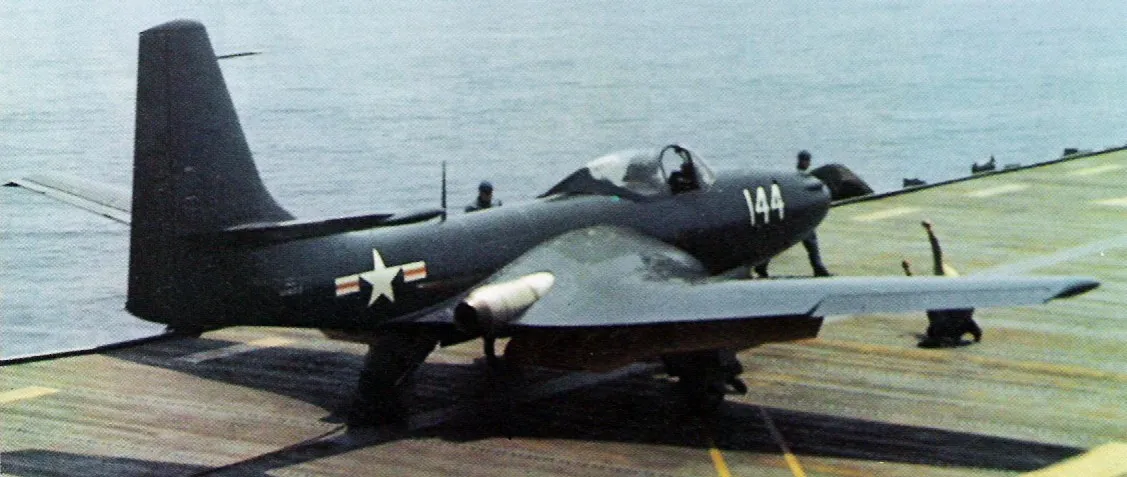
(USN Photo)
A USN McDonnell FH-1 Phantom of Fighter Squadron 17A (VF-17A) "Phantom Fighters" taxis to the catapult during carrier qualifications on the light aircraft carrier USS Saipan (CVL-48), in May 1948.
_with_folded_wings_1948.webp)
(USN Photo)
A U.S. Navy McDdonnell FH-1 Phantom of Fighter Squadron VF-17A aboard the light aircraft carrier USS Saipan (CVL-48) with its wings folded, 1 May 1948.
_underway_at_sea%2C_circa_in_May_1948_(NH_97612).webp)
(USN Photo)
The U.S. Navy light aircraft carrier USS Saipan (CVL-48) underway at sea, with eight FH-1 "Phantom" jet fighters of Fighter Squadron 17A (VF-17A) "Phantom Fighters" on her flight deck, ca May 1948.
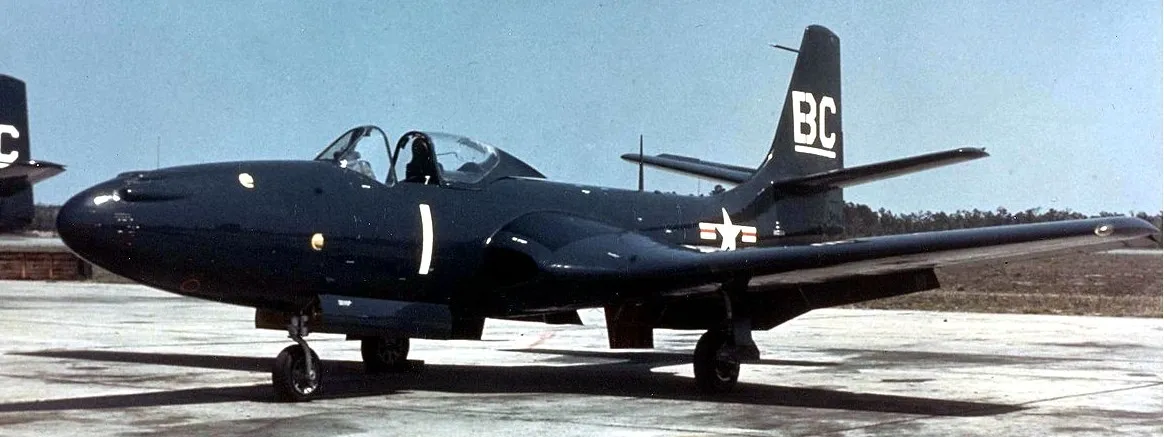
(USN Photo)
U.S. Marine Corps McDonnell FH-1 Phantom of Marine Fighter Squadron VMF-122, 1949.
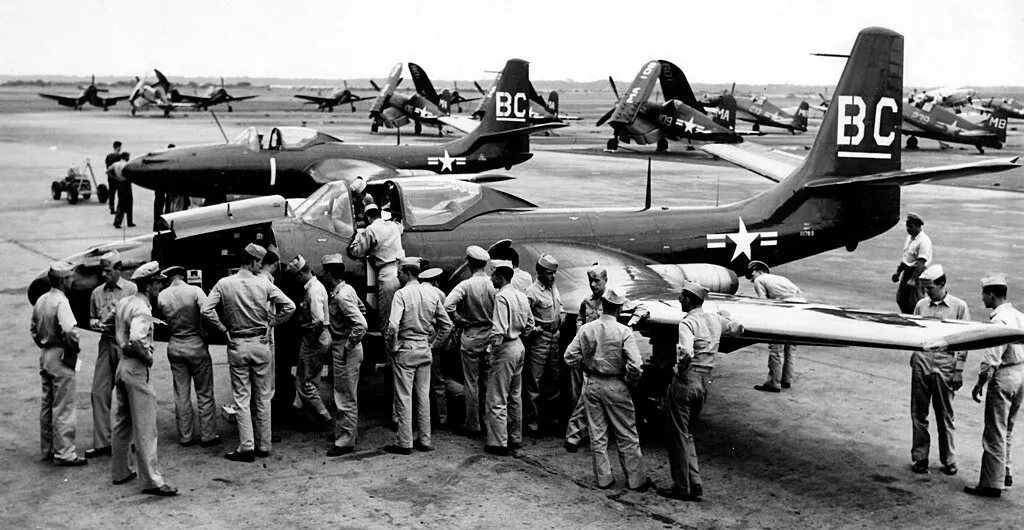
(USN Photo)
McDonnell FH-1 Phantom (BuNo. 111783), one of the first jets to arrive at the Naval Air Station Jacksonville, Florida. These fighters were serving with Marine fighter squadron VMF-122 on 9 June 1948., 1948.
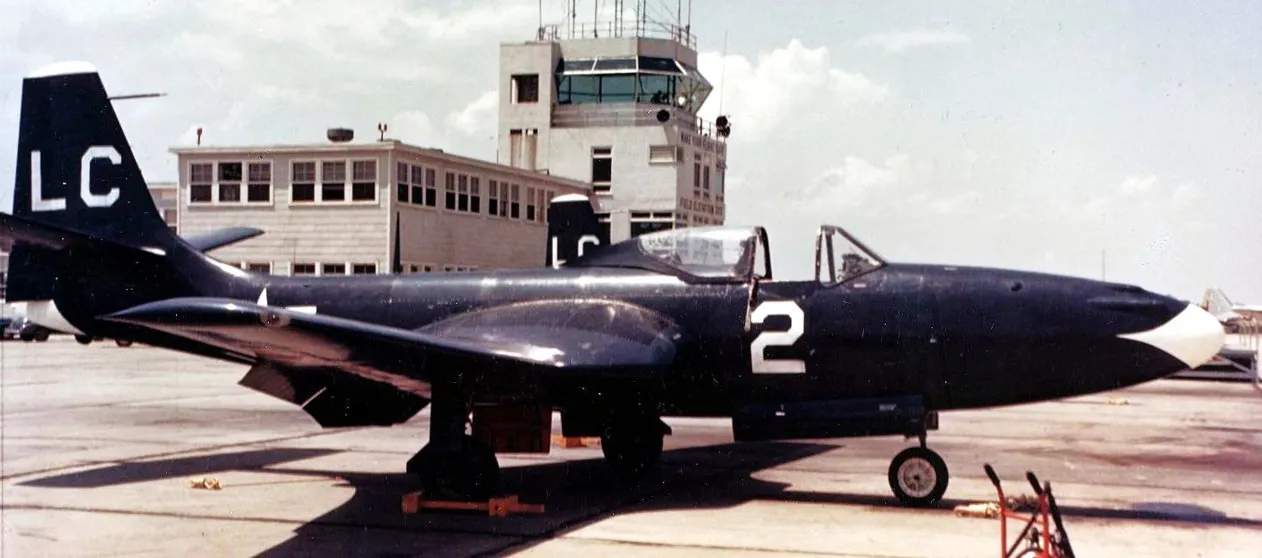
(USN Photo)
A U.S. Marine Corps McDonnell FH-1 Phantom of Marine Fighter Squadron VMF-122 at Naval Air Station Memphis, Tennessee

(National Archives and Records Adminstration Photo)
USMC McDonnell FH-1 Phantoms in formation over Cherry Point, North Carolina, 1948.
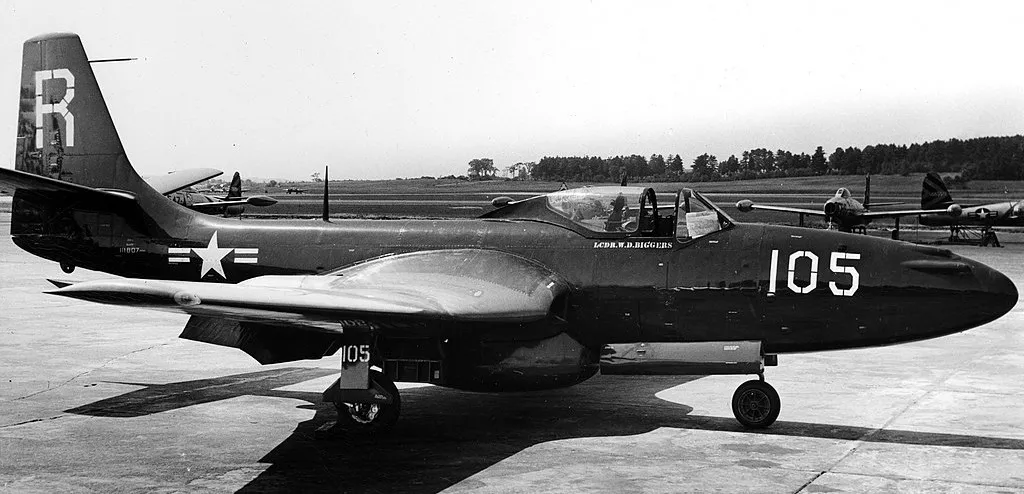
(USN Photo)
A U.S. Navy McDonnell FH-1 Phantom (BuNo. 111807) of Fighter Squadron 17A (VF-17A) "Phantom Fighters" at Dow Air Force Base in Bangor, Maine, in 1948. Several Republic P-48B Thunderjets are visible in the background.
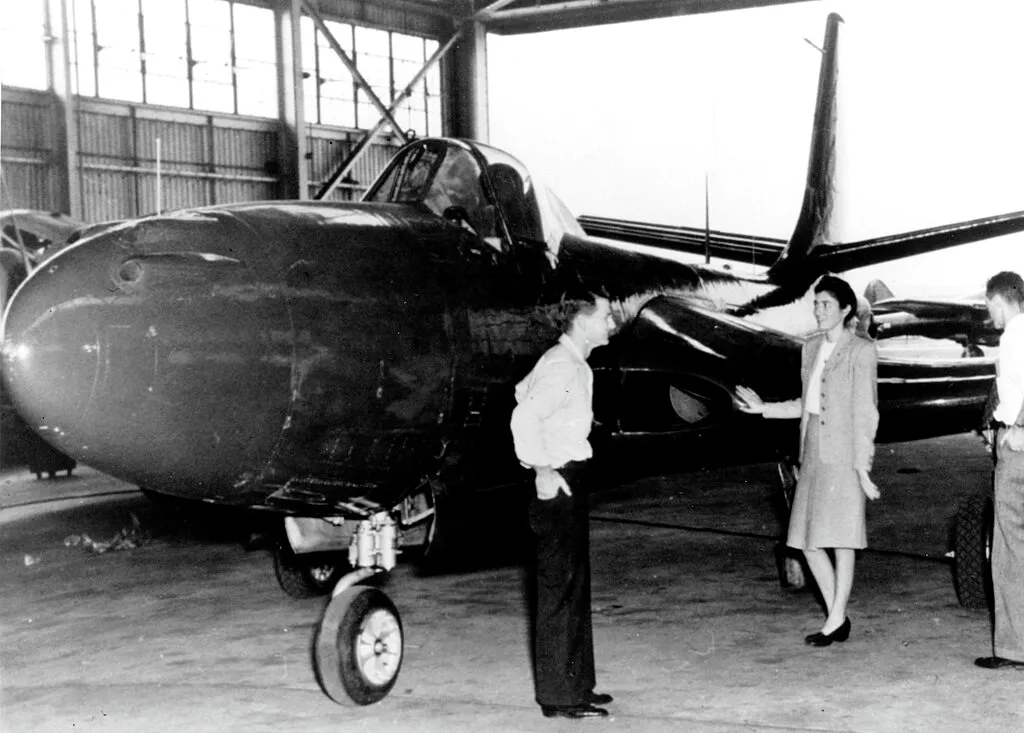
(USN Photo)
A McDonnell FH-1 Phantom about to be reworked at the station's Overhaul and Repair Shop (later Naval Aviation Depot), at the Naval Air Station Jacksonville, Florida, in July 1949.
McDonnell FH-1 Phantom survivors:

(350z33 Photo)
FH-1 (BuNo 111759). National Air and Space Museum of the Smithsonian Institution in Washington, D.C. This aircraft served with Marine Fighter Squadron 122 (VMF-122). It was retired in April 1954, with a total of 418 flight hours. The aircraft was transferred to the Smithsonian by the U.S. Navy in 1959.
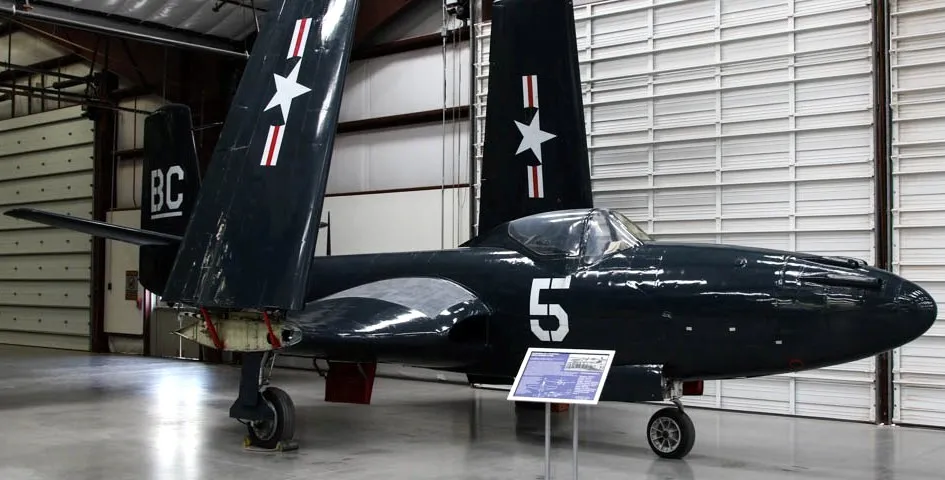
(Chris Kennedy Photo)
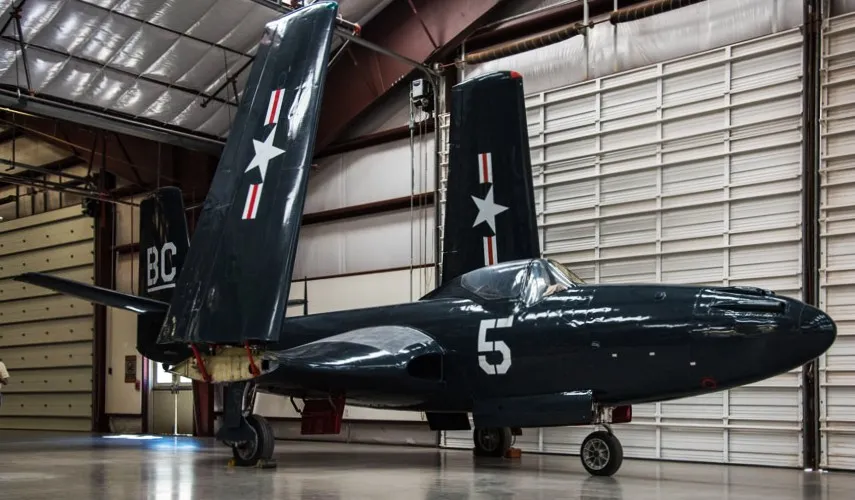
(PASM Photo)
FH-1 (BuNo 111768). Pima Air & Space Museum, Tucson, Arizona, on loan from the National Museum of the Marine Corps, Triangle, Virginia. Formerly a Progressive Aero aircraft c/n 456, Reg. No. N4283A, it was placed on display at the Marine Corps Museum. The aircraft was later transferred to the St. Louis Aviation Museum, and then the National Warplane Museum in Geneseo, New York. In 2006 the aircraft was moved to the Wings of Eagles Discovery Center in Horseheads, New York, and moved to Tucson in 2016.
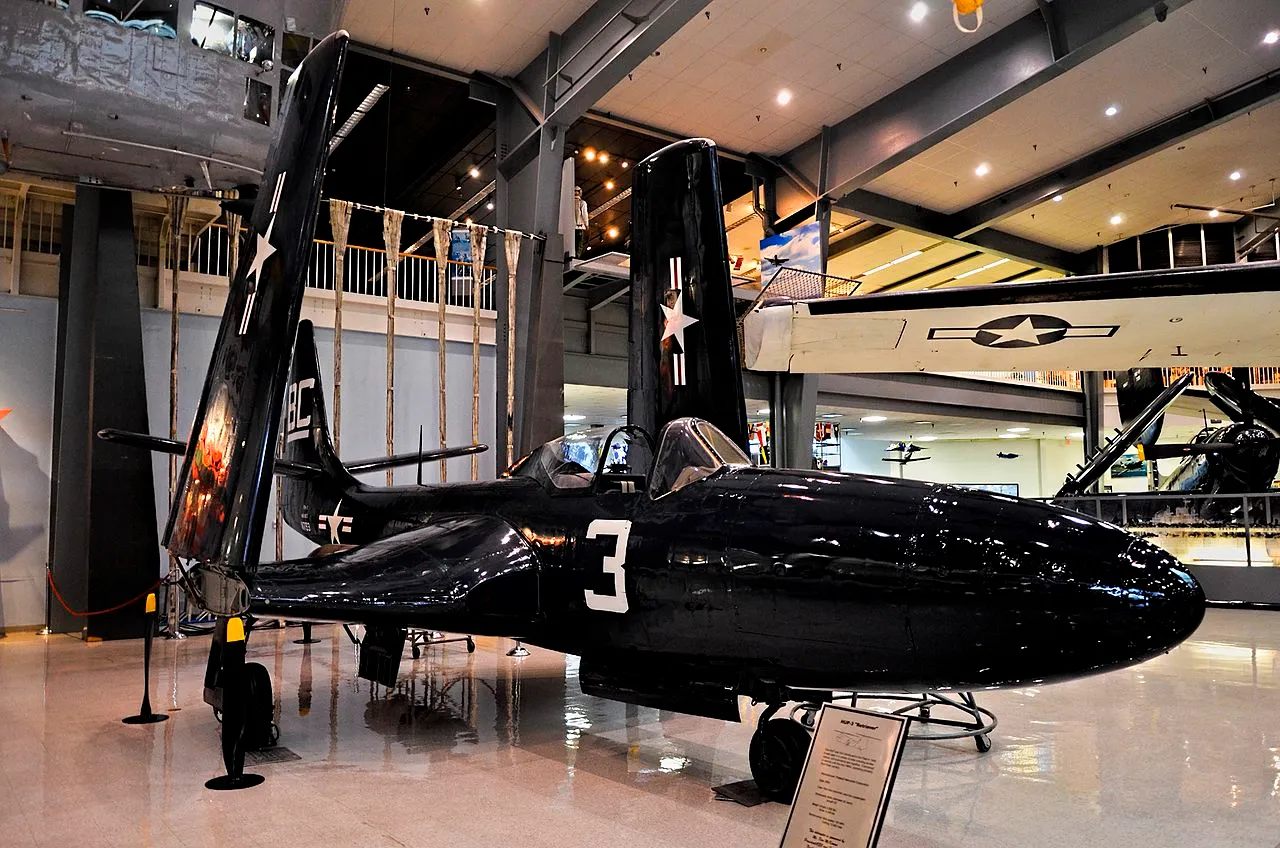
(Tomas Del Coro Photo)
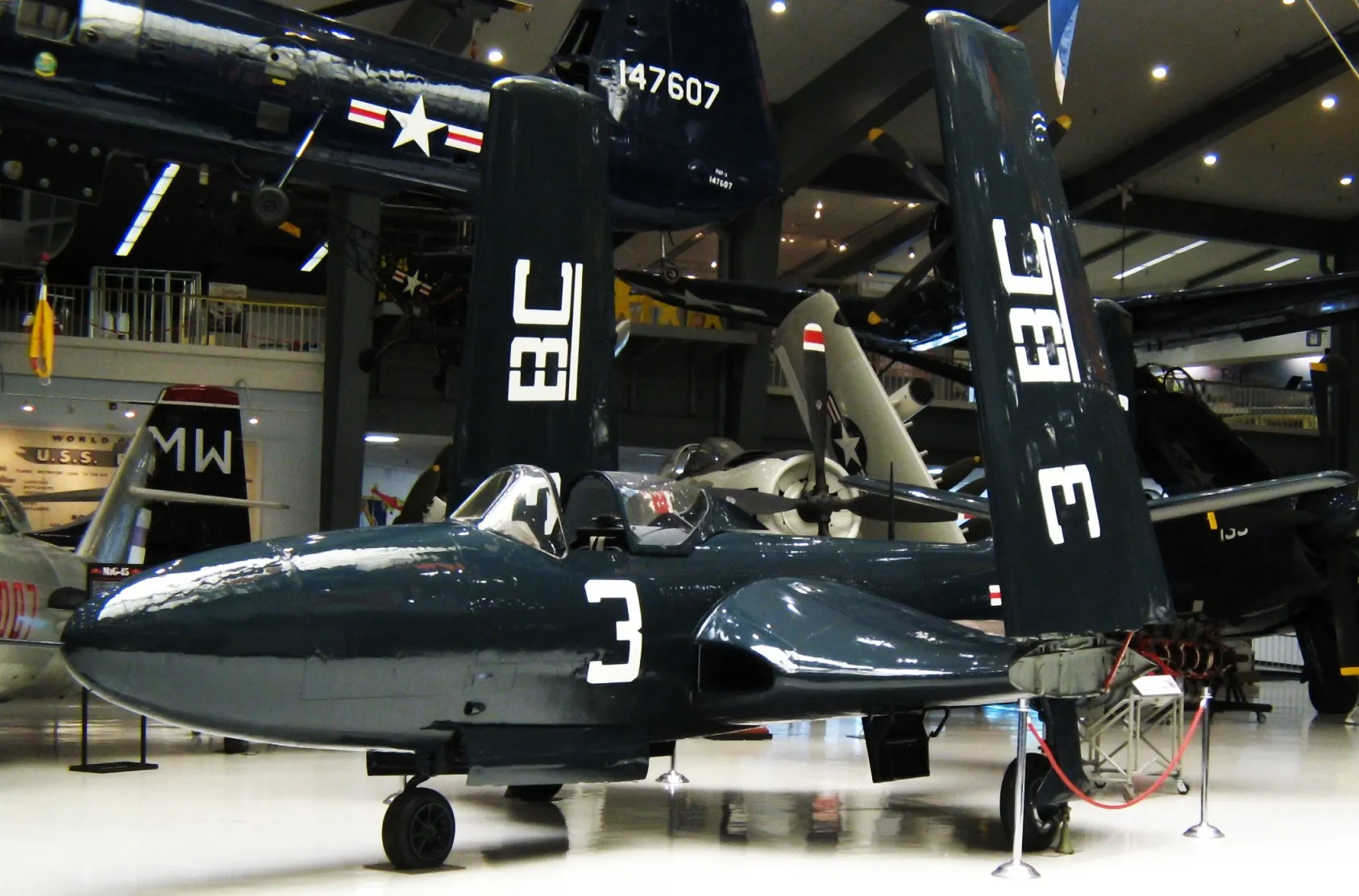
(Greg Goebel Photo)
_(3-10-2025).webp)
(ZLEA Photo)
FH-1 (BuNo 111793). National Naval Aviation Museum at Naval Air Station Pensacola, Florida. This aircraft was accepted by the USN on 28 February 1948. After flying for a brief time with Marine Fighter Squadron (VMF) 122, the first Marine jet squadron, at Marine Corps Air Station Cherry Point, North Carolina, it was stricken from the naval inventory in 1949. The museum acquired the aircraft from National Jets, Inc., of Fort Lauderdale, Florida, in 1983.





